with Simon Darnley
More stories from the community
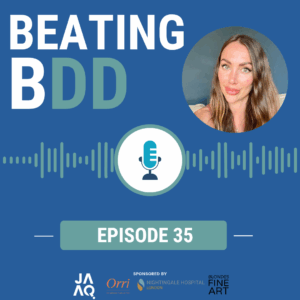

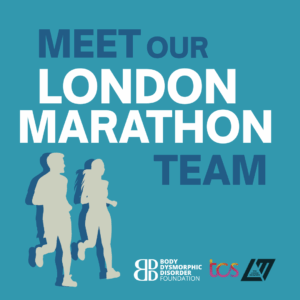
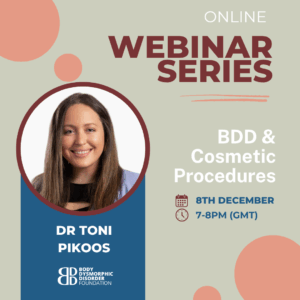

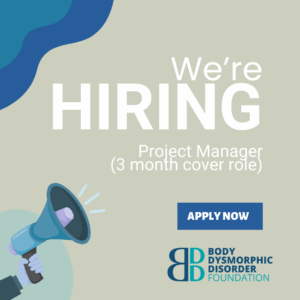
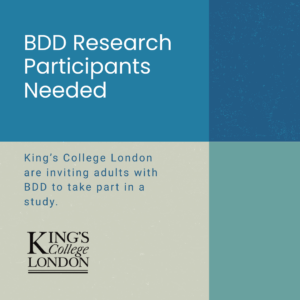
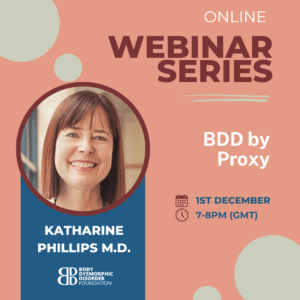
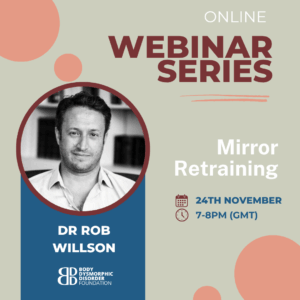
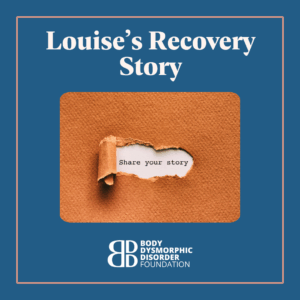
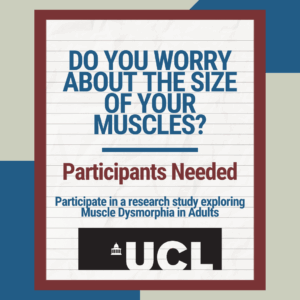
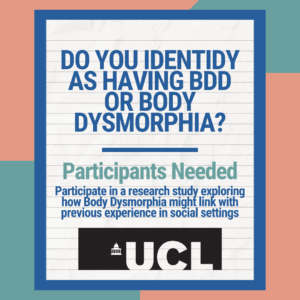
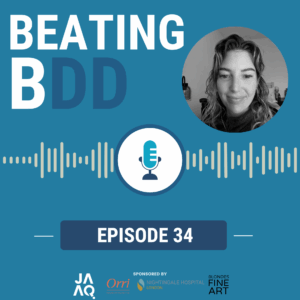








































































































As a friend or family member of someone who has BDD you are in a unique and influential position with regards to his or her recovery. However, it is sometimes easy to let yourself become overwhelmed by the stresses and strains of helping someone through what is an extremely difficult period of their lives. Remember that your own health and well-being is as important as your loved one’s. It is critical to his or her recovery that you ensure you can provide the best support that you can. There are steps you can take to aide you in this; help is out there.
“The more you know about the disorder the more effective you can be”
The more you know about the disorder the more effective you can be in dealing with and understanding what it is your loved one is going through. Get to know this site: follow the links, get the books, and read the articles. Aside from the benefits to making your role easier and more effective, people with BDD may at times (for a whole host of reasons) be reluctant to inform themselves, and so it is imperative you do.
With your loved one’s consent, it may be appropriate to arrange a session together with their therapist. The benefits to this are manifold. Keeping the support network for your loved one as consistent and coherent as possible will benefit his or her recovery. In addition, the therapist may be able to open up avenues of support for you, advice on how best to manage the disorder, and above all reassure and help you in your role.
What follows are some personal insights and experiences I have had from living with my partner who is recovering from BDD. I hope this is a helpful tool, amongst the others (given above), to aid the recovery of your loved one.
What is most difficult and at times frustrating to comprehend when encountering this disorder, is how on earth can she be so dramatically concerned about her appearance. How can she think he looks disgusting? She is clearly not.
First of all, I have found it literally impossible to convince her otherwise; this line of reasoning is at best futile and at worst exacerbates the disorder. The simple fact that the way she looks is not causing the disorder. The way you think she looks is most certainly not the cause but most importantly, the way she thinks she looks is not the cause either. The distorted view she has of her appearance is a symptom of the disorder, not a cause. However, her perception of herself is very real to her It is important not to undermine this and the distress that it causes.
While it is important to be clear that you do not agree with her opinion of herself, it is equally important not to be drawn into conversations about her appearance. What I have found invaluable in these situations is to widen the context of the conversation, to focus on why his view of herself is so distorted? On an ongoing basis, it is important to remind her that she is dealing with an anxiety disorder, disguised on the surface by his symptoms and safety behaviours, and especially disguised by what she sees in the mirror.
“Try to be patient and encourage her not to over-indulge in her symptoms”
You should be striving at all times to focus on dealing with the roots of the anxiety: the core beliefs. Try to be patient and encourage her not to over-indulge in her symptoms and safety behaviours. It is very beneficial and important to acknowledge and encourage the commitment and courage it takes for her to begin talking about and overcoming her BDD. When my partner began to be able to verbalise her anxiety to a wider network of friends and colleagues, much of the embarrassment and secretiveness that held the disorder in place was dispelled. People tended to be extremely understanding and supportive. This made the sometimes-claustrophobic nature of being her sole confidant, on such an overwhelming matter, lighter on both of us.
It is vital that this is not done on her behalf, and equally that she not be coerced into to sharing her problem, as this will serve only to compound the embarrassment and anxiety holding much of the disorder in place. Reflecting on the period before my partner’s diagnosis of BDD with that of the period after her diagnosis and the subsequent professional help she received, it is astounding how much she has achieved. Much of what is written above (for purposes of clarity) seems to show a smooth arc from diagnosis to recovery. I feel it necessary to assure you that the experience was nothing of the sort, and still is not. It remains an experience of struggle and confusion as to what exactly BDD is and how best to tackle it. What is, I hope, clearly outlined, is a summary of how I (and many others) have been able to support her onto the road to recovery. This recovery has proved very real and dramatic since she began receiving cognitive behavioural therapy and challenging directly what lies beneath her feelings of disgust at her appearance.
“BDD desperately wants to keep itself in place”
I cannot stress enough how important this first difficult step – of actively seeking help from professionals – was for her. What is important to remember is that BDD desperately wants to keep itself in place; it created in my partner a vicious circle of embarrassment, shame and secretiveness that made talking about it literally unbearable for her. It is, however, this process of communicating that has been the most successful tool in tackling the disorder, and the most effective support I have been able to provide.













My brother Martin Joseph McAnulty was 22 when he committed suicide on the 24th November 2010. At the time he passed, neither Martin nor his family had heard of the debilitating condition called Body Dysmorphic Disorder. But those of us who loved him sought an explanation for his suicide, and the note he left us, from a psychiatrist. And so my experience of this condition comes not from living with someone diagnosed with it, but from grieving and trying to understand my brother after he had passed.
“It’s hard to imagine that someone so apparently outgoing could be suffering from such a condition”
Martin was an intelligent, normal ‘lad’ who participated in activities typical of any boy his age, such as going out with his mates, playing football, supporting a football team (Tottenham) and spending time with his family. He studied Creative Writing and Journalism at St Mary’s University, and was involved with the university newspaper. It’s hard to imagine that someone so apparently outgoing could be suffering from such a condition. But after he passed we realised that he had been suffering alone, and in secret.
On the night he died Martin came home to see my mum, dad and sister. I was living at university, so missed seeing him that final time. They thought it was unexpected that he had come home from university. But he explained that he was going to visit a friend, and so thought he would pop in and say hello. Martin spent time with my mum, dad and sister separately. Looking back they can see that he acted in a way that was unlike him. He declined the radiator key my dad had offered him for his uni house, despite needing it, and asked our mum if she was proud of him. Then, instead of visiting a friend like he said, Martin went to a nearby field and sadly killed himself. It was a passerby that noticed Martin and called the police.
Once he was identified the police came to our house and informed my mum that Martin had died. His family was called home, where we were told what had happened. The police gave us a letter written on Martin’s laptop that they had printed off for us to read.
‘The reasons for doing this are because I cannot live with my scarred nose anymore. I have tried oils, creams and anything else I can put on it. The condition of my nose is progressively worse at time of writing; skin is peeling off and it hurts when I move it the slightest bit. I cannot shower properly as my nose ends up in excruciating pain and whenever water or sweat goes on my nose, more skin peels off.
‘When I was looking in the mirror all the time it was not because I was vain, but scared. I was worried and petrified at the state of my nose. Whenever I asked for help I hit a brick wall. I was told “don’t be silly I can’t see anything”, or “stop being vain stop looking in the mirror”. No-one offered me real honest advice, maybe out of politeness, but it didn’t help.
‘I’ve had enough of fighting and battling my issues, instead of ‘manning up’, I’m giving up. I’m a beaten, broken man, in the words of Shawshank redemption, “Get busy living or Get busy dying.” I’ve chosen to do the latter.’
“At this point none of us could understand how he could have done something so awful over something we felt to be insignificant and non-existent”
This was a portion of what Martin wrote in his final letter. He also wrote of the love he felt for his family. At this point none of us could understand how he could have done something so awful over something we felt to be insignificant and non-existent. It was only when my auntie Elizabeth, who worked in health care for many years, did some research into the symptoms Martin describes above and other feelings he wrote of in the letter that she came up with an answer. We contacted Dr David Veale, a psychiatrist with expertise in BDD. He agreed that Martin had been suffering from the condition. In some ways my aunt gave us a gift: we might not have closure on the fact of his death, but we have an answer to the question of why he felt he had no choice but to die.
Nevertheless, the pain we feel individually and as a family is one that is difficult for me to describe. We are completely heartbroken and helpless. I sometimes try to put myself in his shoes and understand the suffering he went through alone, but it is impossible, as I can’t experience what he felt. Looking back, Martin had shown signs of body dysmorphia. But they were so intermittent, and so secretive, that it was impossible for us to see what was wrong. He did things such as shaving the top of his eyebrows when he was 14, asking me to apply makeup to his spots, and staring in the mirror for long periods of time.
It has been hard to come to terms with the fact that he died from a condition we’d never heard of, and at times my mum feels unsure he did die from it, since it was never diagnosed. But this is like saying the thousands of men who have died from undiagnosed prostate cancer didn’t really die from it. Martin went to the GP to ask for help with his nose before he passed away. He was given steroid cream, but of course this wasn’t what he needed. I don’t blame the GP for not knowing that Martin had been suffering mentally, because I don’t think he knew either.
With support from our amazing family, supportive friends and counselling, we started our journey towards understanding his death and the way in which Body Dysmorphia affected him. Martin made his choice, and none of us could have prevented what he did. I do believe that if he had got the answer he so desperately needed – a diagnosis – then maybe I wouldn’t be writing this testimonial about him now. My hope is that through raising awareness about this condition, hopefully others will find their answer. I believe that if Martin’s experience helps to save others, then his death wasn’t in vain.












